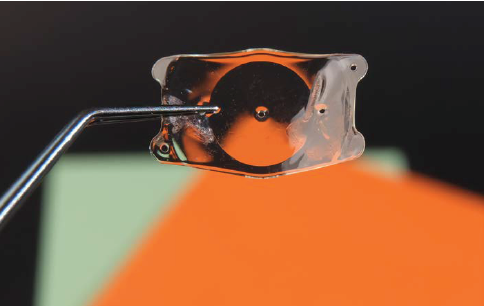Eye JC: Online Journal Club
ICL: The Lasso Formulas

“ The LASSO suite provides a set of powerful, reproducible, yet convenient ICL sizing formulas with state-of-the-art performance in patients with low and moderate degrees of myopia. “
Implantable collamer lenses (ICL) have gained wide popularity as an alternative to laser refractive surgery for refractive error correction, while several studies have demonstrated their safety and efficacy.
Accurate ICL sizing and vault prediction remain the main challenges, with inadequate vault comprising the leading cause of ICL exchange/explantation. An undersized ICL can increase the risk of cataract formation due to insufficient vaulting, whereas an oversized ICL may result in secondary glaucoma and endothelial cell loss. Several other ICL-sizing formulas or nomograms have been proposed in addition to the manufacturer’s official online Calculation & Ordering System (OCOS) formula, which calculates ICL size based on white-to-white (WTW) distance and anterior chamber depth (ACD).
In a recent episode of the ESCRS Eye Journal Club, we discussed the study published by Rocamora (et al.) in the Journal of Cataract and Refractive Surgery with guest speakers and ICL users Mr Allon Barsam (UK) and Prof Emilio Pedrotti (Italy). Our conversation centred on a new set of ICL sizing formulas—the LASSO suite—developed to better suit a less myopic population of Caucasian descent.
The LASSO formulas consist of the LASSO-OCT, LASSO-Biometry, and LASSO-Full models, based on preoperative parameters obtained by the respective devices and processed with the LASSO technique. The study authors concluded the LASSO suite provides a set of powerful, reproducible, yet convenient ICL sizing formulas with state-of-the-art performance in Caucasian patients—including those with low and moderate degrees of myopia. Other published formulas, they noted, predominantly tested in Asian datasets with a high proportion of highly myopic eyes.
Both speakers agreed there is a need for accurate ICL-sizing formulas offering a postoperative vault prediction, a feature not currently available with the manufacturer’s formula. Indeed, the OCOS formula relies only on WTW and ACD measurements, and although it seems mostly accurate for average eyes, it is notable for its outliers. Formulas that incorporate more detailed anatomic dimensional parameters are anticipated to be more precise—a useful tool when choosing the preferred ICL size.
Mr Barsam highlighted that clinical complications of incorrect vault may not always correlate with the achieved vault, as often there are cases where vault exceeds the recommended range of 250 to 750 μm with no clinical implications. He therefore recommended judging this on an individual basis. And while the study proposes the LASSO suite as more accurate for non-Asian eyes, there is not enough information on the racial background of the studied population. Both speakers mentioned that ICLs are gaining more space in their practices, coming up 5% to 10% currently versus laser refractive surgery—but they are less keen to widely adopt the lenses for very low refractive errors or keratoconic patients.
Guest speakers Mr Barsam and Prof Pedrotti stated interest in using the LASSO suite based on the available equipment to improve the safety of ICL implantation in their group of patients. The LASSO suite can be accessed at http://icl.emmetropia.be.
References
Rocamora L, Orlando JI, Lwowski C, Kohnen T, Mertens E, Van Keer K. “Postoperative vault prediction for phakic implantable collamer lens surgery: the LASSO formulae.” J Cataract Refract Surg. 2022 Oct 14.
